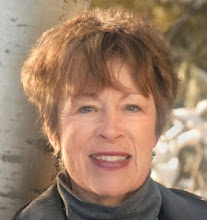 |
| Ansel and the Range of Light by Chuck Henningsen, © 2010 |
That kind of mentoring is still happening at the Mabel Dodge Luhan House. In late August I met seasoned New York photographer Harvey Stein, who offers an annual workshop at the Mabel Dodge. It occurred to me that it would be fun to feature snippets from his class. I wondered why Harvey chose Taos. (He has a book of New Mexico photographs in the works.) The answer came in his workshop raison d'etre:
New Mexico has been described as a place of inviolate, pristine
beauty, engendering an almost spiritual feeling for the land and
the overwhelming sense of peacefulness. Since the 1880's
photographers and artists (Georgia O'Keeffe, Paul Strand, Ansel
Adams, Laura Gilpin, Eliot Porter) have been irresistibly drawn
to the incredible landscape, brilliant clear light, and rich
Native American heritage.
For over three decades I have dealt with why Taos attracted painters; it was refreshing to get a photographer's take on this region and its particularities. I also learned from Harvey that part of the adventure--besides coming to grips with the brilliance and ephemeral qualities of light and atmosphere in northern New Mexico--would be to explores the diversity of our area. He arranged for a van to transport his students to the peaks of the Sangre de Cristo Mountains, to the depths of the Rio Grande Gorge, to sites and sights around Taos, to neighboring villages, traveling as far as Santa Fe, Ghost Ranch and Georgia O'Keeffe country, with the cliffs and hills around Abiquiu.
I asked Harvey if his students might be interested in showing their work. He sent out a call for photos to his students. Three of them responded, their photos and comments in response to the Taos area follow.
 |
| Lonely Landscape by Carly Blake Sebouhian, © 2010 |
As soon as I arrived at the Mabel Dodge Luhan House, our home away from home for our photography workshop, I knew the week ahead was going to be exactly what I had hoped. The peace, quiet and beauty that surrounds the house is just what I need to find the creativity that I feel sometimes gets buried in the chaos of New York....I found everywhere we went to be so different, and loved trying to capture the feelings and emotions of each place in my photographs. -- Carly Blake Sebouhian
 |
| Taos Pueblo Crosses by Jonathan Blum, © 2010 |
I’m not used to desert-like environments, and being in those spots really made me think about scale, and how, in terms of scale, we (people) are so insignificant in comparison to the natural world in which we live. -- Jonathan Blum
 |
| Rio Grande Gorge by Mort Sheinman, © 2010 |
This subject seemed fitting as summer ends with the fall equinox, and the light changes. I hope that you have enjoyed these photos as much as I have. It's wonderful to see the lineage of photography from Ansel Adams in 1930 to Harvey Stein's students seventy years later.
The response from Harvey and his students has inspired me to feature other workshops across the creative spectrum in future postings. It's good to know that the same qualities that attracted the early painters and photographers to Taos continue to lure creative artists to our area -- and to the Mabel Dodge Luhan House.
Adios for now,
Liz









